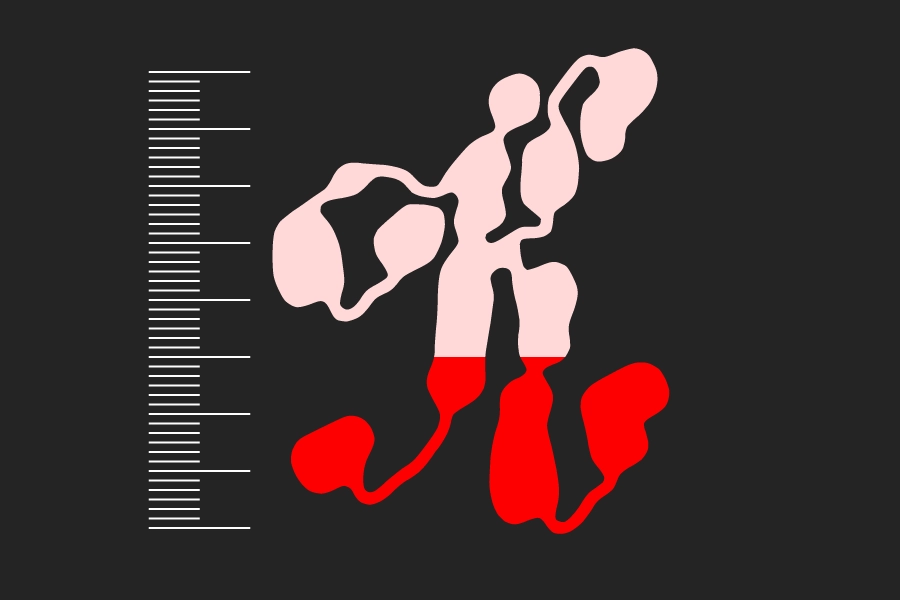With the exception of ravers and doctors, people hardly knew what ketamine was 20 years ago. Now, there isn’t enough ketamine to go around. Practitioners warn that an ongoing shortage is hindering the fledgling ketamine therapy industry and that it’s having a noticeable impact on patients facing treatment disruptions. For some, the consequences of a shortage are dire.
“[Ketamine] can be lifesaving for someone who is in crisis with suicide,” says Dr. Sandhya Prashad, President of the American Society of Ketamine Physicians, Psychotherapists & Practitioners (ASKP3). “That makes it important that there’s enough supply.”
The positive upshots to various ketamine applications are well documented at this point. Research shows it can alleviate a wide range of conditions such as PTSD, anxiety, and pain, to such an extent that the FDA gave a form of ketamine, known as esketamine (and marketed as Spravato), Fast Track and Breakthrough Therapy designations intended to facilitate its development and review. While studies continue to bolster ketamine’s potential benefits, the drug has proven particularly valuable for palliating treatment-resistant depression.
READ: Ketamine Therapy and Virtual Reality Together? Welcome to the Future
“The biggest benefit is its very rapid-acting effects for depression and particularly suicidality,” Prashad explains. “The biggest claim to fame for ketamine is that really potent anti-suicidal effect. It can literally save someone’s life because it can be immediate.”
Access to ketamine, however, is often inconsistent. According to an October 2023 survey of 126 ketamine practitioners conducted by ASKP3, 82 percent have encountered difficulties acquiring the drug recently, forcing 61 percent to cancel appointments and another 8 percent to shutter or consider closing altogether. Of the estimated 500-750 ketamine clinics currently practicing in the US, that’s a disturbingly high rate, with roughly 1 in 5 clinics encountering supply issues. This, Prashad says, can be dangerous for patients in treatment.
“We often talk about the fact that [ketamine-assisted therapy] tends to be a treatment, not a cure, and ongoing maintenance is required,” she explains. “For patients with suicidality, it can come back really intense and really quickly—all of a sudden. When I’m scheduling my patients, if I know someone has struggled with a lot of suicidality, I’m going to be very particular about when I tell them they need to come back, and I’m going to schedule it at the time of their treatment. So delaying that treatment, for certain individuals, they see this huge rebound in the suicidality when the ketamine wears off, and that can be a time that they’re at a particular danger of attempting.”
How to Grow Shrooms Bundle
Take Both of Our Courses and Save $90!
This isn’t a hypothetical risk, either. According to the survey, at least one delayed treatment resulted in a patient’s suicide.
“It would be devastating to lose access to ketamine infusions,” says Rory O., whose ketamine treatments for pain and PTSD have decreased in dosage due to the shortage, resulting in more frequent pain flareups. While she has been offered physical therapy as an alternative, she explains, “Without infusions, I don’t think I’d be able to even manage [physical therapy]. Before the infusions, my flareups would last weeks, and during some, I couldn’t even leave my bed.”
At full dosage, Rory only needed treatment every five weeks, but with the dosage reduction, she now requires treatment every three. Given how the shortage is impacting her clinic, she is lucky to receive an infusion at all.
“Due to the shortage,” she says, “my clinic is not currently able to take [any new] pain patients. Before I needed a 2.5-hour slot for 2-hour infusions, and now I can only do the 45-minute infusion with the 1-hour slot. Every patient had to switch to 45-minute infusions now.”
Although the exact cause of the shortage is unclear, Prashad says clinicians and other participants at the recent ASKP3 National Conference held in Austin, TX, attribute it to several factors. One of which is the FDA’s shifting regulations.
READ: What It’s Like to Do Ketamine-Assisted Psychotherapy
“The FDA changed some requirements with regards to nitrosamines and how much nitrosamine could be in certain drugs, and a fair amount of ketamine didn’t meet that criteria” because the levels of nitrosamines were too high, Prashad says. “My other understanding is that companies only plan on a certain amount of increase in demand per year, and there has been quite an upward trajectory, and [ketamine companies] haven’t been able to keep up with it. That was what I was told by a compounding pharmacist.”
She also claims that the rise in orally administered ketamine used by teletherapy companies has contributed to the issue. “The bioavailability of oral [ketamine] is maybe only 10 or 20 percent, so if you think about how much [teletherapy services] might send to a patient, it may be several hundred milligrams, whereas I might use that same amount to treat 10 people in my office. So the usage of the raw materials is probably way higher than we realize, and they just haven’t been able to keep up with that demand.”
Michael Petegorsky of Mindbloom—a provider of precisely the type of teletherapy Prashad described—agrees that there is a shortage. He is skeptical of the assertion that orally administered ketamine is to blame, however. He points out that while ketamine teletherapy didn’t see its popularity explosion until the COVID lockdowns of 2020, according to the FDA, the shortage began in 2018 and has affected intramuscular injections rather than oral applications.
“There are different routes of administration for ketamine,” Petegorsky explains. “There’s IV, which is a liquid. There are intramuscular injections. There are sublingual tablets and lozenges. Those are made through different processes. Going back to 2018, for IV ketamine, you’ve seen a whole bunch of different reasons for shortages. In telehealth, nobody’s prescribing IV ketamine. The medicine that people are prescribing is compounded ketamine, usually in the form of tablets or lozenges. We’ve talked to a bunch of different pharmacies, we’ve talked to other telehealth providers, because the question [of why there is a shortage] keeps coming up. But I am not aware of any shortages related to the compounded ketamine tablets and lozenges that you prescribe for telehealth.”
Petegorsky agrees, however, that increased demand, manufacturing delays, and shortages of active ingredients have contributed to the problem. Mylan Institutional, a major drug manufacturer, also divested from producing the drug.
Ben Spielberg—founding neuroscientist at Bespoke Treatment, which provides both in-clinic IV treatment and at-home oral treatment—is similarly wary of chalking up the shortage to oral administration. “Ketamine shortages are surprisingly common in medicine. I can remember a ketamine shortage back in 2018, pre-Mindbloom, and other at-home ketamine solutions. There have been countless shortages since—some that lasted just a few weeks, and other times months.”
Ketamine isn’t the only drug impacted by shortages. The US is experiencing shortages of everything from ADHD medication to antibiotics to compounds for chemotherapy. While drug shortages have fluctuated in severity since the early 2000s, recent supply issues have been driven by quality issues, panic buying, and the underlying fragility of the generic drug industry. As a result, patients with a range of conditions face difficult decisions regarding their medication and treatments. While bipartisan support exists for tackling the matter, no significant action is being taken to resolve it.
Spielberg says Bespoke avoids disruption by sourcing ketamine supplies from multiple distributors and has therefore seen no impact on operations at its brick-and-mortar clinics. He does admit that other clinics have been affected by the shortage but places blame on the DEA.
“Production of controlled substances are tightly regulated by the DEA, such that the previous year helps to determine the allocation [of resources for drugs] to be produced in the current year. Manufacturers cannot produce more than they are allocated by the DEA, lest they face criminal charges—even if there is sufficient demand. If there is anyone to blame, it’s the DEA.”
The DEA recently announced plans to ramp up the production of certain psychedelics to meet the needs of institutions conducting clinical trials. There was no mention of boosting ketamine production, however.
The Agency’s report on production targets cited industry claims that the existing quotas led to drug shortages, a statement it adamantly denied. Instead, the DEA blamed market forces, labor shortages, and supply chain issues.
Regardless of what is causing the ketamine shortage, Prashad argues that the solution is relatively straightforward.
“There have been some talks about funding more production of some of these essential medications—because ketamine is actually on the essential medication list—to have more of it manufactured in the US. We need to figure out a way to manufacture more.”
How to Grow Shrooms Bundle
Take Both of Our Courses and Save $90!
With the number of ketamine prescriptions skyrocketing to over five times what they were five years ago, one thing is certain: Shortage alleviation can’t come fast enough. For some, it is a matter of life or death.
“We need more options, not less,” says Rory O. “The right to health includes availability, accessibility, acceptability, and quality. Everyone has different types of pain, different bodies, different needs. We deserve to access the treatments that work for us.”
Have You Heard…?
Ketamine is used off-label to treat mental health conditions. But, it can be dangerous to use outside of medical care. Learn the basics about ketamine dosage here.
The psychedelic properties of ketamine are why it’s used in clinics to treat mental health conditions. But falling into a “k-hole” away from the care of a trained provider or experienced sitter can be dangerous—you may not be able to move your body away from danger or help yourself if you begin to vomit while lying on your back.
The increase of ketamine clinics around the country could offer a model for other psychedelic therapy clinics as policies change. Here’s what it’s like inside ketamine clinics.
Emergency Services
In the event of an emergency, please dial local emergency services. For mental health care related to substance abuse in the U.S., please dial the Substance Abuse and Mental Health Services Administration National Helpline at +1 (800) 662-4357. For mental health emergencies, dial 988.
This article is intended for educational and journalistic purposes and should not be used in place of medical advice. DoubleBlind does not advocate participating in illicit activities. Always consult your local drug laws before engaging with any illicit substance.

DoubleBlind is a trusted resource for news, evidence-based education, and reporting on psychedelics. We work with leading medical professionals, scientific researchers, journalists, mycologists, indigenous stewards, and cultural pioneers. Read about our editorial policy and fact-checking process here.

DoubleBlind Magazine does not encourage or condone any illegal activities, including but not limited to the use of illegal substances. We do not provide mental health, clinical, or medical services. We are not a substitute for medical, psychological, or psychiatric diagnosis, treatment, or advice. If you are in a crisis or if you or any other person may be in danger or experiencing a mental health emergency, immediately call 911 or your local emergency resources. If you are considering suicide, please call 988 to connect with the National Suicide Prevention Lifeline.



